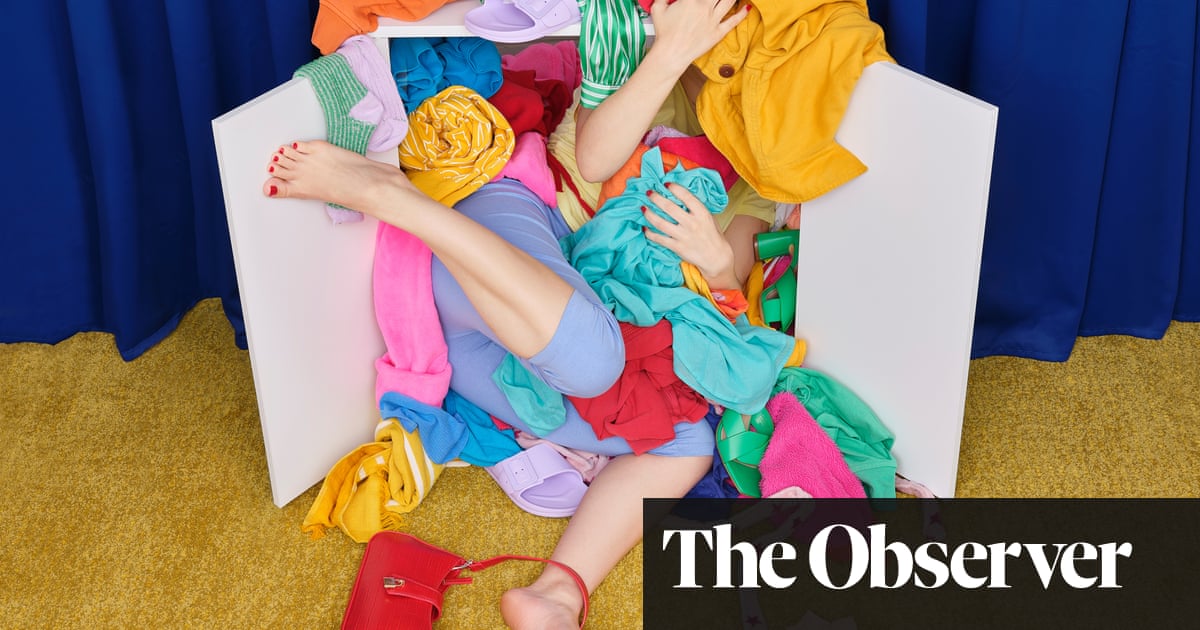
Should I use an electric or manual toothbrush?
No ambiguity here: even an entry-level electric beats a manual. “Power toothbrushes can remove up to twice the plaque and really help to improve your gum health in the longer term,” says Dr Nigel Carter, chief executive of the Oral Health Foundation.
The two main types are the oscillating-rotating brush (Oral-B has a wide range) and the sonic brush (Philips Sonicare is the leading brand). The latter has the benefit of a faster brushing motion, but it doesn’t really matter which you choose, says Dr Nyree Whitley, group clinical director of the dental-care provider, the key point is minimising the need for manual dexterity: “It can be quite challenging to put the toothbrush at 45 degrees, get circulation motions and the right amount of pressure on the tooth.”
How long should I brush for?
Two minutes – though most of us do not come close to that. The average time spent brushing is 43 seconds, says Carter. He suggests parents should get kids used to brushing for two minutes, even if their smaller mouths can be done in less time, as “that’s the habit they’re going to keep for life.” The Oral Health Foundation’s advice is to start as soon as the first teeth appear, with a children’s brush, and supervise until the age of seven.
Another advantage an electric toothbrush has over a manual is that many now come with timers or apps that connect to your brush via Bluetooth to monitor and tell you how long you spend brushing. That means having your phone to hand every time you brush, but let’s be real: it’s never far away anyway.
Coverage also matters. The more hi-tech electric toothbrushes, such as the Oral-B iO series, use artificial intelligence (or “3D teeth tracking”) to ensure that all areas of your mouth get equal attention. The latest model retails for a mind-boggling £500, although they can usually be found discounted to half that price, advises Carter. I try to imagine circumstances where I would spend £250 on a toothbrush, and can’t. Just make sure you pay equal attention to the inner, outer and biting surfaces of every tooth.
Is it hygienic to brush my teeth in the shower?
This issue was raised on Reddit’s No Stupid Questions forum. A man’s girlfriend called him weird for brushing his teeth in the shower, out of some vaguely articulated sanitary concern. He said it was a “normal thing most people do”.
The response from Reddit was mostly along the lines of: why would it be weird? “I mean, I’m still going to stand there for a while blankly staring into the void, may as well brush my teeth,” was the top-voted comment.
My dental professionals respond with similar bemusement. “Certainly don’t utilise the toothbrush as a loofah at the same time – but, it’s fine,” says Whitley. Carter agrees: “I don’t think it matters where you brush.”
I say, if you’re hung up on your boyfriend brushing his teeth in the shower, you’re looking for problems.
Are those fancy water picks worth the money?
All that matters is that you clean between your teeth every day. Carter says water picks, which use a pressurised, often pulsating stream of water to clean between your teeth, can be a savvy investment for people with bridge work or orthodontic braces, who might find it harder to clean in between their teeth (though, he adds, “It takes a bit of mastering so that you don’t shower yourself with water as well”). They can cost hundreds, but you can get a basic model for about £50.
If your oral care needs are more straightforward, you can probably save your money. Interdental brushes have been shown to be more effective at plaque removal than string floss, and many people find them much easier to use (though you should ask your dentist which size is best).
But, says Whitley, if you choose waxed floss tape rather than string, “it really isn’t that difficult”. The trick is to tie it in a loop, then put fingers either side of the knot, “like a little lasso”, rather than messing about with a long bit of string.(This video gives you the idea, with some jaunty music.) If your gums bleed, persevere – they will get healthier with consistency.
Does it matter which toothpaste I use?
Fluoride is the key ingredient, so make sure your toothpaste contains at least 1,350-1,500ppm (parts per million) and no sweeteners – duh! “Don’t assume toothpastes are all the same, because they’re not,” says Whitley. “Some tooth-cleaning tablets and herbal toothpastes don’t have fluoride in them. As a dentist it’s really difficult not to go up and tell people in the supermarket, ‘Don’t buy that one.’”
Once you’ve checked the fluoride content, you might look for one that meets your needs, such as for sensitive teeth, or a preference for whitening.
What about mouthwash?
If you are brushing twice a day, for two minutes each time, you can probably do without mouthwash, says Carter – but if you’re not, it’s a “very useful adjunct to your cleaning routine.” While brushing removes more plaque than mouthwash, throwing it in can improve plaque control by up to 20%. Make sure it has fluoride in it, for an additional advantage.
In terms of when to use mouthwash, a dental therapist on TikTok went viral for saying that it should always be used before brushing your teeth. But as soon as I mention TikTok videos, the professionals visibly shudder. “I saw an awful one where people were using things other than toothbrushes to brush their teeth,” says Whitley. “Just, like … sticks.”
It goes without saying: do not brush your teeth with sticks. This tip about mouthwash, however, turns out to be quite sound
as not all mouthwashes contain fluoride. By rinsing with those that have a lower concentration than toothpaste (or, even more so, with water), “you’re effectively washing your mouth out,” says Whitley.
The advice differs depending on the mouthwash’s active ingredients: those that contain antimicrobial chlorhexidine, for example, should be used after brushing. But in general, dentists suggest using mouthwash at a separate time to brushing, such as between meals.
Should I wet my toothbrush before putting toothpaste on?
“You’re immediately putting it into a mouth full of saliva,” says Carter. “It’s probably not going to make any difference.”
Sticking the toothbrush under the tap harks back to the time when bristles were harder. These days even “hard” brushes are made from a manageable nylon. “What was hard in the 1970s you’d probably scrub the floor with now,” says Carter. Most people are advised to use medium-to-soft brushes.
Do I need a tongue scraper?
Like water picks, tongue scrapers haven’t taken off in the UK the way they have in the US. “It’s not something we’d routinely recommend as clinicians, but if people want to use them, fine,” says Whitley. They might help with bad breath or tongue discolouration by removing the bacteria that builds up – but if either of these is a problem, see your dentist.
Will whitening my teeth damage them?
Whitening toothpaste is a bit of a marketing gimmick, says Whitley. “It can stop stains building up – simple things like tea, coffee, red wine – but it won’t make teeth whiter than they originally were.”And some at-home whitening kits risk damaging more than your teeth. Many sold online far exceed the UK legal limit of 0.1% hydrogen peroxide, with potentially dangerous results. Of 36 products bought from AliExpress, Amazon, eBay and Wish last year, consumer advocates Which? found that 20 contained more than 10 times the legal hydrogen peroxide level, and six contained more than 100 times.
Even if a kit seems well reviewed, “you wouldn’t know quite where it’s coming from, or even if it’s legitimate”, says Carter. He tells me about a case where someone used a product containing 350 times the legal level of hydrogen peroxide. I shall spare you the gory details.
Still, as a regular tea drinker, Whitley uses one herself, sometimes for sensitive teeth: “It’s about getting a balance between the two.”
How often do I need to see the dentist?
Good news: it may be less often than you think. The traditional six-monthly check-up was established “without huge science behind it”, says Carter. And tooth decay has been less of a problem since fluoride toothpaste was introduced in the 1970s.
If you’ve not had a filling for three to four years, have good daily routines and are free of gum disease, you may only need a yearly check-up, or even every two years, says Carter (which will also free up appointments for more needy patients). A 2020 study found no difference in oral health between patients who saw the dentist once every six months and those who observed “risk-based recall intervals”.
A change in lifestyle, and therefore diet, can be a risk factor, and Whitley points out that “it’s obviously more difficult to eat healthily on a low income. And if people are stressed, some turn to sugar as a crutch.” Similarly, children who have “never needed a single filling” can see a sudden reversal in fortunes after they leave home, she adds.
But, in general, if your dentist tells you not to come back for a year, you can believe them.
I saw someone on TikTok using human hair to floss. Is this advisable?
If people have difficulty wrangling actual string floss, Carter points out, “I don’t think human hair is going to work any better. And what about bacteria from the hair you’re transferring into your mouth?”
I also try to ask Whitley about #teethtok trends – that use lemon juice and rubber bands – but she has heard enough and does not indulge me: “Just no!”












